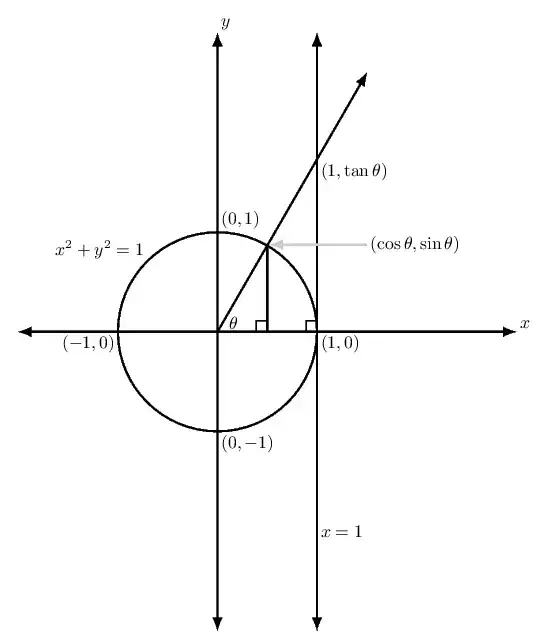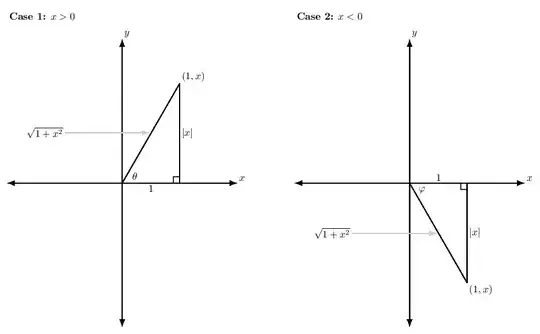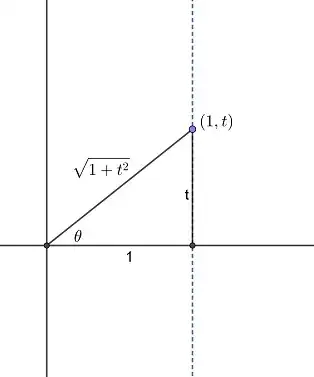An angle $\theta$ is said to be in standard position if its vertex is at the origin and its initial side lies on the positive $x$-axis.
The unit circle is the circle with radius $1$ and center at the origin of the coordinate plane.
We define the cosine and sine of an angle in standard position to be, respectively, the $x$-coordinate and $y$-coordinate of the point where the terminal side of the angle intersects the unit circle. We define the tangent of an angle in standard position to be the $y$-coordinate of the point where the terminal side of the angle intersects the line $x = 1$. See the diagram below.

If $\theta = \arctan x$, then $\tan\theta = x$ and $-\dfrac{\pi}{2} < x < \dfrac{\pi}{2}$. Consequently, we can draw a right triangle in the first quadrant or fourth quadrant, as shown below.

If $x > 0$, we draw a right triangle in the first quadrant with opposite side of length $|x| = x$, adjacent side of length $1$, and hypotenuse of length $\sqrt{1 + x^2}$.
If $x < 0$, we draw a right triangle in the fourth quadrant with opposite side of length $|x| = -x$, adjacent side of length $1$, and hypotenuse of length $\sqrt{1 + x^2}$.
If $x = 0$, we draw the line segment from $0$ to $1$ on the positive $x$-axis. The opposite side has length $|x| = |0| = 0$, the adjacent side has length $1$, and the hypotenuse has length $\sqrt{1 + x^2} = \sqrt{1 + 0^2} = \sqrt{1} = 1$.
In each case, the terminal side of the angle intersects the line $x = 1$ at the point $(1, x)$ (yes, I am using $x$ in two different ways here), so the tangent of the angle is $x$.
We find the sine of the arctangent of $x$ by dividing the $y$-coordinate of the point $(1, x)$ by its distance from the origin. Hence, in each case,
$$\sin[\arctan(x)] = \frac{x}{\sqrt{1 + x^2}}$$
Note that since the denominator is always positive, the sign of $\sin[\arctan(x)]$ is equal to the sign of $x$.
Since the numerator of $\sin[\arctan(x)]$ is the $y$-coordinate of the point $(1, x)$ rather than the length of the side opposite angle $\theta$, we obtain the same result when we draw the triangle in the fourth quadrant as we do if we draw it in the first quadrant.


